As our vehicle approached the police checkpoint at the small remote village of Wengda, about 70km south of Larung Gar, Laura stooped down to avoid detection. But it was hardly necessary, for it was already 10 o’clock at night, and the checkpoint was unmanned. We sailed through and congratulated ourselves for having made it through the notorious checkpoint which I heard had turned back some Korean tourists in the past few days. Many Chinese-looking foreigners, like the Japanese and Taiwanese taking the bus, had been turned back at a check point where everyone’s ID was checked.
Pale faces were denied tickets to Larang Gar outright at bus stations.
My companion Laura, a plucky middle-aged American lady, had given up hope of ever visiting Larung Gar. No one would sell her a bus ticket. I invited Laura along to try our luck using a different route.
We took shared taxis. The young Tibetan driver had assured us that all would be fine but he had also put us at the back so that we remained obscured, tinted windscreens notwithstanding.
We arrived at Larung Gar close to midnight. The real sight of Larang Gar is even more spectacular than the pictures. The lights from the little houses on the hillsides seemed like thousands of glowing eyes in the sky against the dark surrounding hills. We stayed the night in the county town of Sertar, 17km north of Larung Gar, where we found a hotel with vacancies which grudgingly accepted us for one night.
We went back to Larung Gar the next morning in a shared taxi with a few Chinese tourists. From the bottom of the valley red houses sprawled in all directions up the hillsides as far as the eyes could see, seemingly stacking one over another almost to the top of the surrounding hills. Near the bottom of the valley some new construction was going on – they were building dormitory complexes, I was told. In the middle of the valley stands the majestic gompa of the Larung Gar Buddhist Institute, established relatively recently in the eighties, but which has grown to make Larung Gar the largest Tibetan Buddhist community in the world.
We attended a Buddhist teaching conducted in Chinese by the famous resident kanbu, or teacher, then wandered around and saw the first of a few demolition works happening on the way up to the temple at the top, where more demolition was taking place. Laura was stopped from taking photographs by a man from an officious-looking group, which included a couple of policemen. She must have been the only westerner around and we were among the many other tourists from all over China who had come to see this famous place.
The monks and nuns went about their daily lives oblivious to the tourists in their midst. They lived separately in the red houses in different sections, demarcated by walls or other physical structures. On the outskirts of the housing clusters above the temple lay a large empty lot, apparently recent clearings.
Security in Larung Gar didn’t seem tight – there was the odd policeman walking around but Laura and I were left alone. Apparently if one gets past the checkpoint before the town then one’s free to roam about without fear of being arrested. We wandered around freely and spent some time in the evening at the hilltop temple, mesmerised by the thousands of lights below, and contemplating the future of this place.
We left Larung Gar the next morning with mixed feelings. I attempted some small talk – carefully – with a Tibetan man who gave us a lift to the main road. “It’s just the houses that are dangerous,” he said matter-of-factly about the demolition works, “a big fire happened a couple of years ago.” About the eviction of residents he said, “Only people of this county will have resident permits. The outsiders, I don’t know what the government’s plans are. They’re expanding the townships below and planning a new city. Larung Gar is included in the greater scheme of things.”




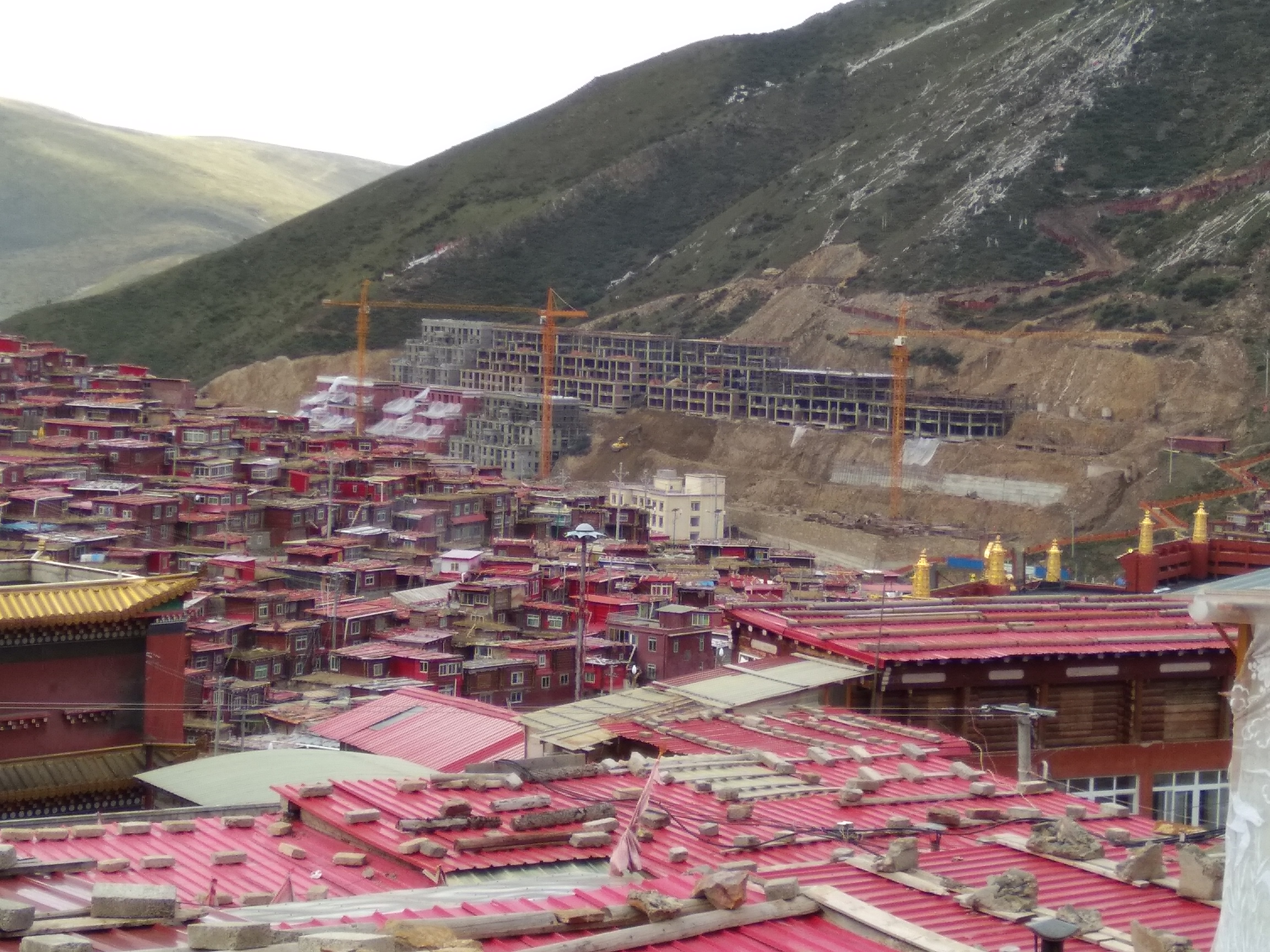
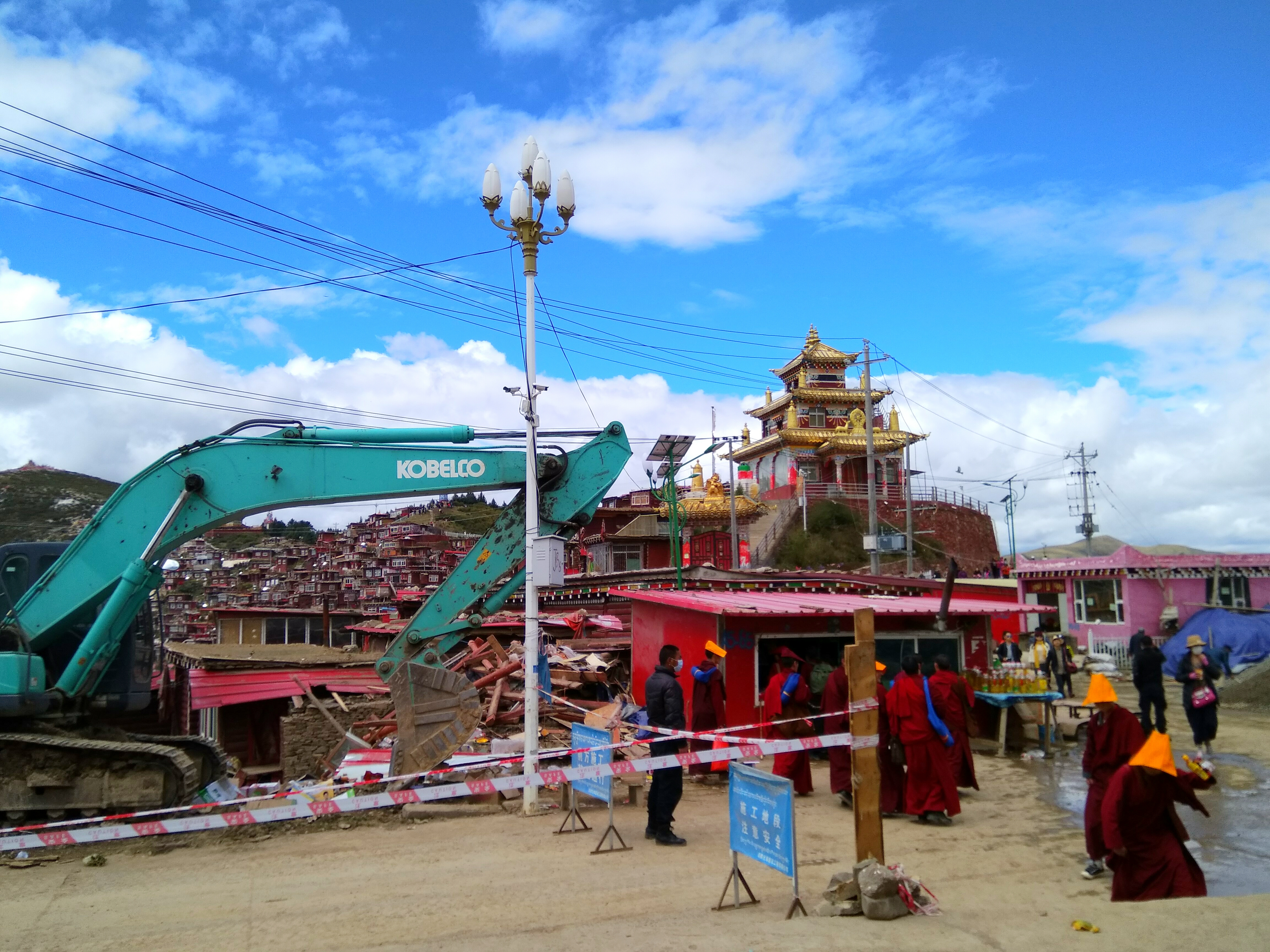
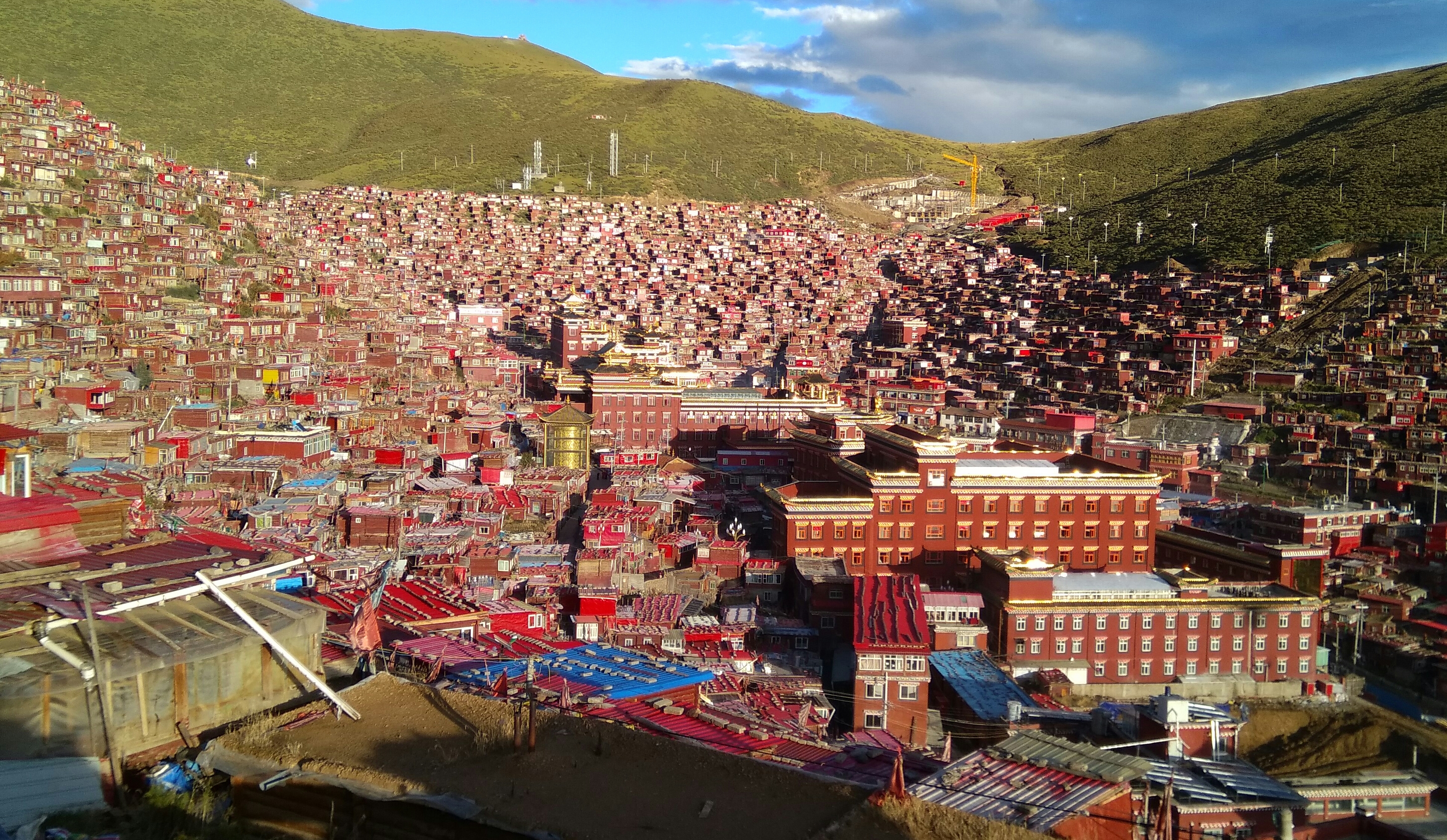

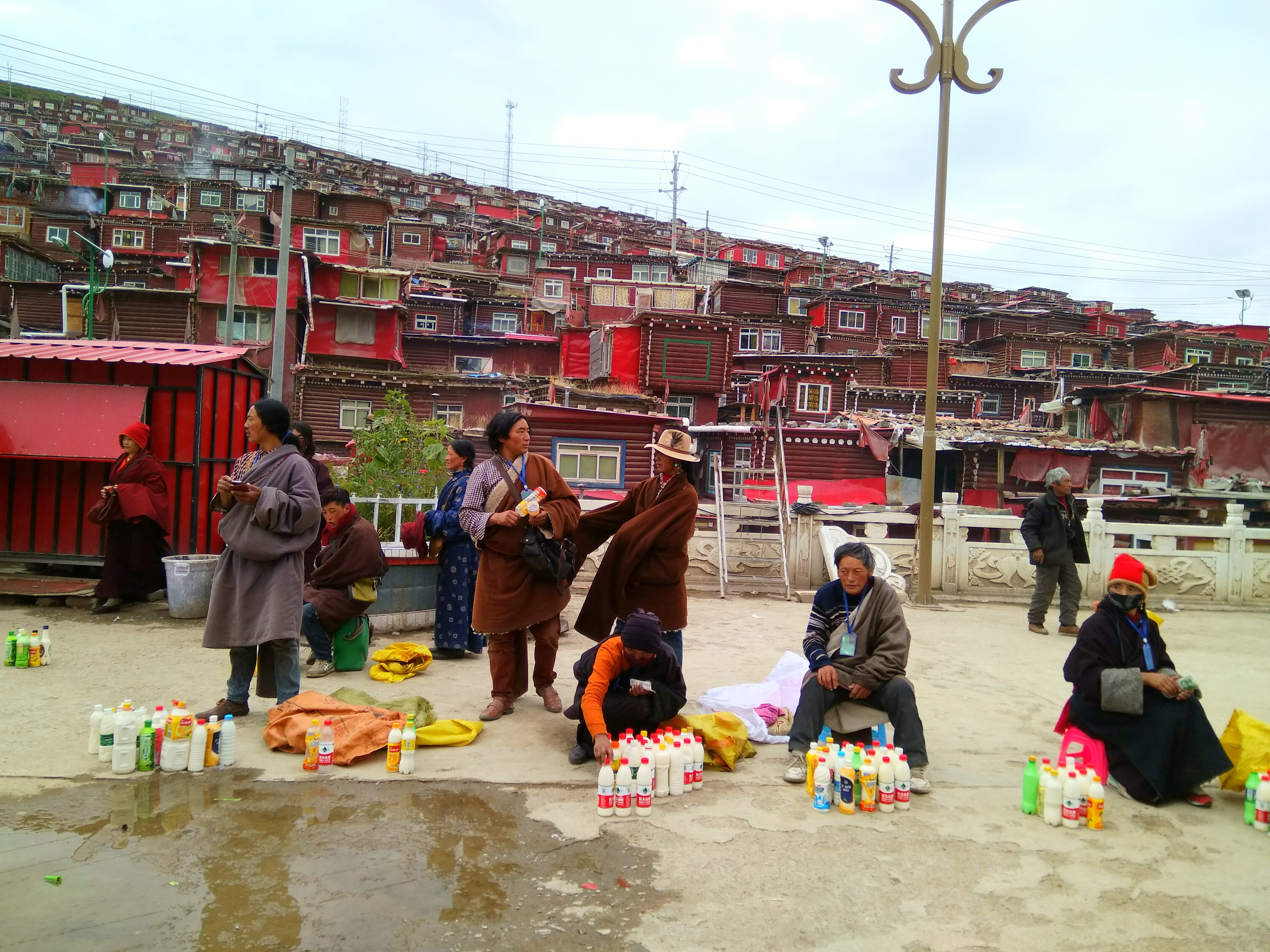
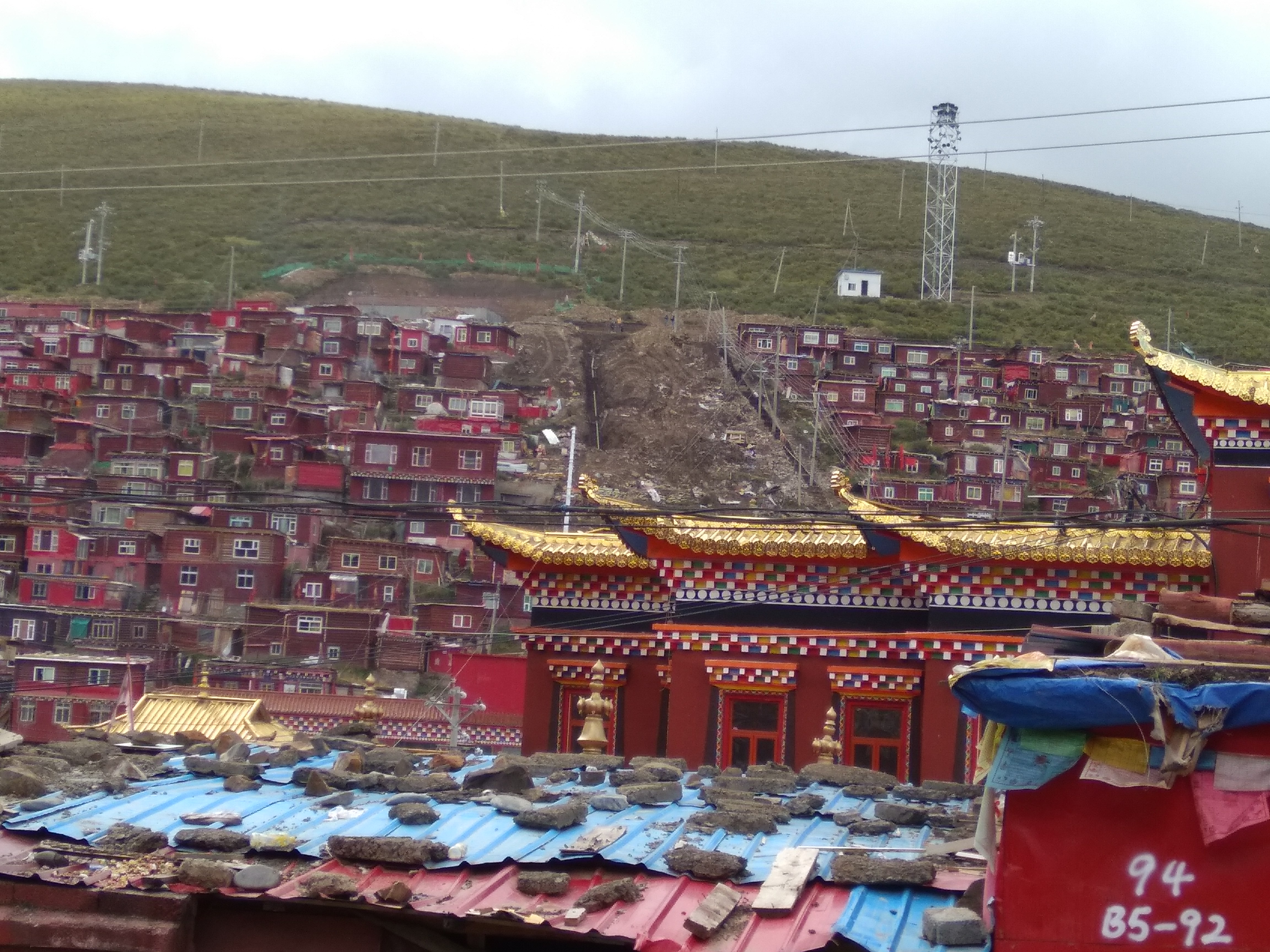
 Print
Print Email
Email